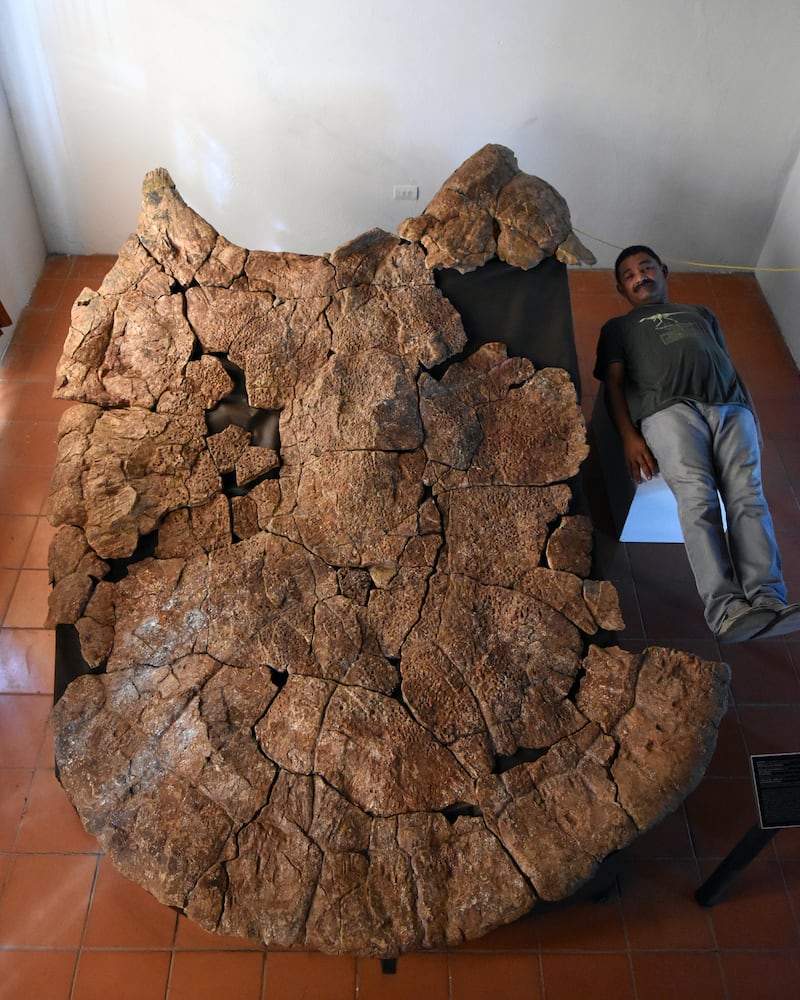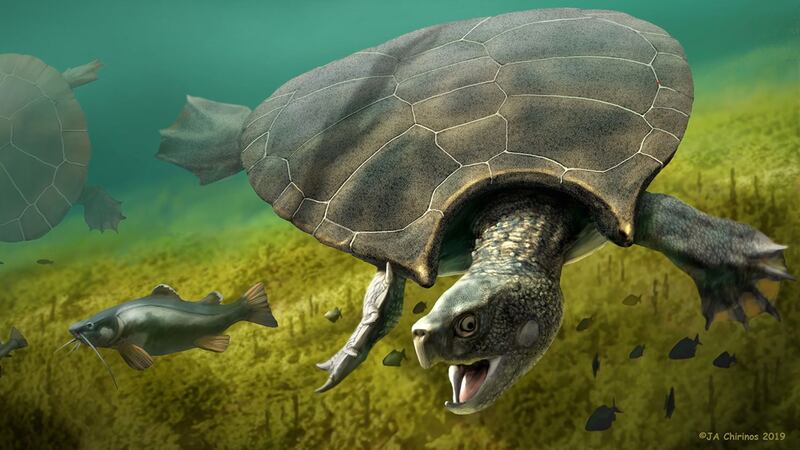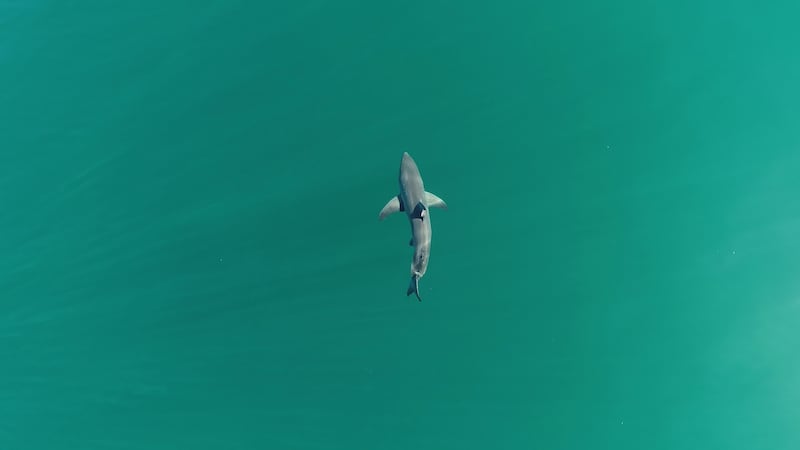An extinct giant turtle had a horned shell up to three metres big that it may have used for combat, scientists say.
Five to 10 million years ago, what is today a desert area in Venezuela was a humid swamp teeming with life.
This included Stupendemys geographicus, a turtle species first described in the mid-1970s.
An analysis of several new shell specimens and the first lower jaw remains of the animal, which was the largest land turtle of all time, reports the biggest complete turtle shell ever identified.

It is 2.40 metres long and may have housed a 1.145-kilogram turtle – twice as large as the largest modern variety, researchers say.
Marcelo Sanchez, director of the Paleontological Institute and Museum of the University of Zurich (UZH) and head of the study, said: “The carapace of some Stupendemys individuals reached almost three metres, making it one of the largest, if not the largest turtle that ever existed.”
He added: “The two shell types indicate that two sexes of Stupendemys existed – males with horned shells, and females with hornless shells.”
Researchers suggest the unique horn-like shells at the front of the hard upper shells, may have served to protect their massive skulls when engaged in combat with other males.
The scientists also discovered jaws and other skeleton parts of Stupendemys, enabling them to revise the evolutionary relationships of this species within the turtle tree of life.
Prof Sanchez explained: “Based on studies of the turtle anatomy, we now know that some living turtles from the Amazon region are the closest living relatives.”
The new discoveries and the investigation of existing fossils from Brazil, Colombia and Venezuela suggest a much wider geographic distribution of Stupendemys than previously assumed.
The animal lived across the whole of the northern part of South America, according to the study published in Science Advances.








